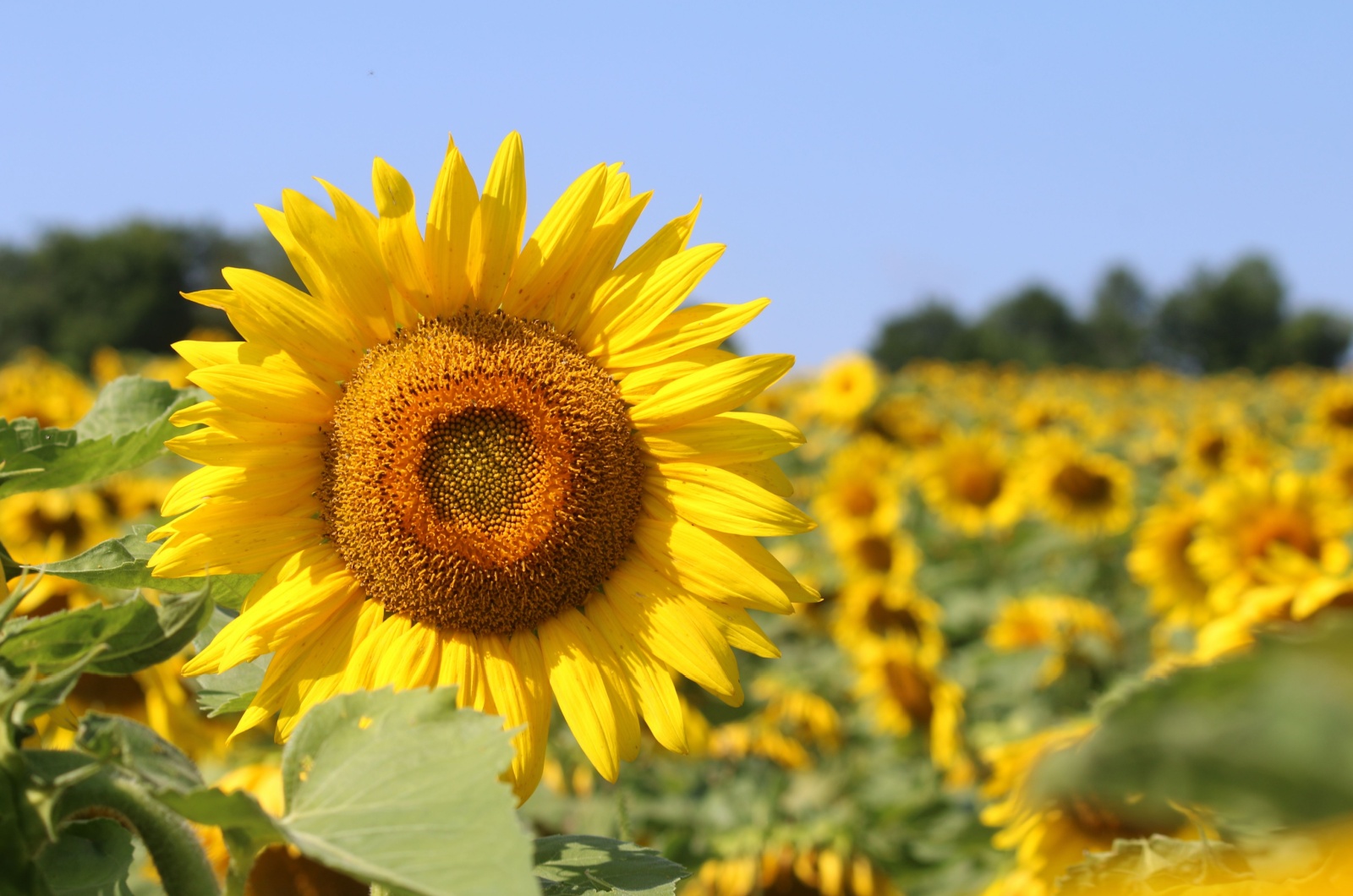Sunflowers are my absolute favorite—big, bright, and always reaching for the sun. But keeping them blooming all season long? That took some learning (and a bit of pep-talking on my part).
It’s definitely not a “plant and forget” kind of deal.
I found out pretty quickly that if you want those cheerful blooms to stick around, you’ve got to give them some love – kind of like taking care of houseplants, but with way more sunshine.
And let’s face it, who doesn’t want their sunflowers to keep shining all summer long?
So, if you are growing them for the first time, I’ve got some fun tips to keep them blooming strong!
1. Fertilize Your Sunflowers Wisely
Annual sunflowers usually thrive without any fertilizer – they seem to get all the nutrients they need from average garden soil.
Many gardeners (including myself) make the mistake of over fertilizing, which usually does more harm than good.
A smart move for prepping your garden is mulching your borders in the fall and winter. This sets your soil up for the next growing season, making fertilizer unnecessary for annuals.
If you’re ever unsure about your soil’s quality, a rapid soil test kit (you can grab one from Walmart) will tell you if anything’s missing.
Now, perennial sunflowers do appreciate a little feeding. I like to use a nitrogen-rich fertilizer early in the season to promote leaf growth. Then, during summer, I switch to an organic bloom booster fertilizer to get those flowers going.
Just keep an eye on the phosphorus level (the middle number on the label) – this is what really helps with flower and fruit production later in the season!
Related: Do Sunflowers Really Like Coffee Grounds And How Does It Effect Their Growth?
2. Stake It Until You Make It
Sunflowers need support (and not just the emotional kind). When strong winds come along, sunflowers tend to topple over and break. Staking them with canes, sticks, or plant supports is the best solution to preventing wind damage.
For shorter varieties, I’ve tried using hazel plant supports, which not only give structure but also add a nice, rustic touch to the garden.
I usually stake them early in the summer while they’re still growing so they can weave through the support naturally.
Whether you go with bamboo canes or something a little more DIY, make sure to keep your ties loose. This gives your sunflowers room to move and grow while still getting the support they need.
Related: 12 Fantastic Companion Plants For Sunflowers
3. Getting Rid Of Flowers Will Get You More Flowers
I used to think sunflowers don’t need deadheading, but that’s not entirely true.
For annual sunflowers, which usually have one tall stem and a single large bloom, deadheading isn’t necessary.
What you can do instead is let the flowers fade and go to seed (these seeds will serve as a snack for many birds later on).
Perennial sunflowers, on the other hand, do benefit from a little extra attention. These shorter, bushier varieties grow multiple flowers on one stem and need regular deadheading.
Take ‘Italian White’ for example – a variety my friend grew last year in Italy. It thrived when she pruned it throughout the summer by snipping off the fading blooms as soon as the petals started to fall.
Cutting back to a leaf node encourages more flowers to bloom well into late summer. And of course, always use sharp, clean tools to keep your sunflowers healthy and looking their best.
By implementing these tips, your sunflowers will bloom and shine better than ever. Enjoy these wonderful sunshines in your garden!



